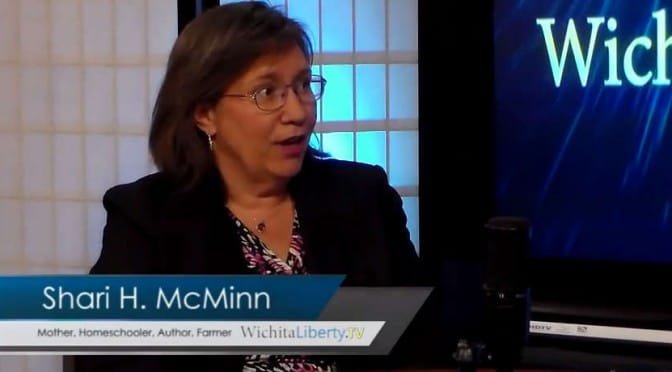Kansas needs to trim state government spending so that its economy may grow by harnessing the benefits of the private sector over government.
In the debate over how to balance the Kansas budget, those who oppose low state taxes say the burden of taxation is simply transferred to other sources, usually in the form of sales and property taxes. Cutting spending is the other possibility, but it is argued that state spending is a good thing, a source of prosperity that Kansas should exploit.
The idea that government spending is a generator of wealth and prosperity is true for only a certain minimal level of spending. We benefit from government provision of things like national defense, public safety, and a court system. But once government grows beyond these minimal core functions, it is markets — that is, free people trading in the private sector — that can produce a wider variety of better goods and services at lower cost.
Those who call for more government spending seem to fail to realize spending has a cost, and someone has to pay. They see the salary paid to a government worker and say that money gets spent, thereby producing economic activity and jobs. But what is the source of the government worker’s salary? It is money taken from someone through taxation. By necessity, money spent on government reduces the private sector economic activity of those who paid the taxes. (At the federal level, government also spends by borrowing or creating inflation. Kansas can’t do this.)
If this loss was economically equivalent to the gain, we might be less concerned. But there is a huge cost in taxation and government inefficiency that makes government spending a negative-sum proposition.
Another fundamental problem with government taxation and spending is that it is not voluntary. In markets, people voluntarily trade with each other because they feel it will make them better off. That’s not the case with government. I do not pay my taxes because I feel doing so makes me better off, other than for that small part that goes to the basic core functions. Instead, I pay my taxes so that I can stay out of jail. This fundamentally coercive method of generating revenue for government gets things off to a bad start.
Then, ask how that money is spent. Who decides, and how? Jeffrey A. Miron explains: “The political process, alas, does not lend itself to objective balancing of costs and benefits. Most programs benefit well-defined interest groups (the elderly, teachers unions, environmentalists, defense contractors) while imposing relatively small costs per person on everyone else. Thus the winners from excess spending fight harder than the losers, and spending far exceeds the level suggested by cost-benefit considerations.” 1
An example in Kansas is the special interest group that benefits from highway construction. They formed a group called Economic Lifelines. It says it was formed to “provide the grassroots support for Comprehensive Transportation Programs in Kansas.” Its motto is “Stimulating economic vitality through leadership in infrastructure development.”
A look at the membership role, however, lets us know whose economic roots are being stimulated. Membership is stocked with names like AFL-CIO, Foley Equipment Company, Heavy Constructors Association of Greater Kansas City, Kansas Aggregate & Concrete Associations, Kansas Asphalt Pavement Association, Kansas Contractors Association, Kansas Society of Professional Engineers, and PCA South Central Cement Promotion Association. Groups and companies like these have an economic interest in building more roads and highways, whether or not the state actually needs them.
As Miron explained, groups like this will spend almost limitlessly in order to receive appropriations from the government. It’s easier than competing in markets for customers and business. It’s perhaps the largest problem with government spending: Decisions are made by a few centralized actors who are subject to intense lobbying by special interests. It is the well-known problem of concentrated benefits and diffuse costs. 2
Some argue that without government spending, certain types of goods and services will not be provided. A commonly cited example is education, which accounts for about half of Kansas general fund spending. Would there be schools if not for government? Of course there would be. There are many non-government schools now, even though those who patronize them must first pay for the government schools before paying for their own schools. And there were many schools and educated, literate Americans before government decided it need to monopolize education.
Still, it is argued that government spending on education is needed because everyone benefits from an educated citizenry. Tom G. Palmer explains: “Thus, widespread education generates public benefits beyond the benefits to the persons who are educated, allegedly justifying state provision and financing through general tax revenues. But despite the benefits to others, which may be great or small, the benefits to the persons educated are so great for them that they induce sufficient investment in education. Public benefits don’t always generate the defection of free-riders.”
Those who still argue that government spending in education is for the good of everyone will also need to defend the sagging and declining performance of public schools. They need to persuade us that government schools are producing an educated citizenry. They need to defend the capture of Kansas spending on schools by special interest groups that benefit from this spending. They actually do a pretty good job of this, which illustrates the lengths to which special interest groups will go. In Kansas, they throw children under the bus.
Back to the basics: Government spending as economic booster is the theory of the Keynesians, including the administration of Barack Obama. Miron, from the same article cited above, explains the problems with this:
That brings us to the second argument for higher spending: the Keynesian claim that spending stimulates the economy. If this is accurate, it might seem the U.S. should continue its high-spending ways until the recession is over.
But the Keynesian argument for spending is also problematic. To begin with, the Keynesian view implies that any spending — whether for vital infrastructure or bridges to nowhere — is equally good at stimulating the economy. This might be true in the short term (emphasis on might), but it cannot be true over the long haul, and many “temporary” programs last for decades. So stimulus spending should be for good projects, not “digging ditches,” yet the number of good projects is small given how much is already being spent.
More broadly, the Keynesian model of the economy relies on strong assumptions, so we should not embrace it without empirical confirmation. In fact, economists find weak or contradictory evidence that higher government spending spurs the economy.
Substantial research, however, does find that tax cuts stimulate the economy and that fiscal adjustments — attempts to reduce deficits by raising taxes or lowering expenditure — work better when they focus on tax cuts. This does not fit the Keynesian view, but it makes perfect sense given that high taxes and ill-justified spending make the economy less productive.
The implication is that the U.S. may not face a tradeoff between shrinking the deficit and fighting the recession: it can do both by cutting wasteful spending (Medicare, Social Security, and the wars in Iraq and Afghanistan, for starters) and by cutting taxes.
The reduced spending will make the economy more productive by scaling government back to appropriate levels. Lower tax rates will stimulate in the short run by improving consumer and firm liquidity, and they will enhance economic growth in the long run by improving the incentives to work, save, and invest.
Deficits will therefore shrink and the economy will boom. The rest of the world will gladly hold our debt. The U.S. will re-emerge as a beacon of small government and robust capitalism, so foreign investment (and talented people, if immigration policy allows) will come flooding in.
In Kansas, we need to scale back government to appropriate levels, as Miron recommends. That means cutting spending. That will allow us to maintain low tax rates, starting with the income tax. Then we in Kansas can start to correct the long record of sub-par economic performance compared to other states and bring prosperity and jobs here.
- Cato Institute, 2010. ‘Slash Expenditure To Balance The Budget’. Accessed April 28 2015. http://www.cato.org/publications/commentary/slash-expenditure-balance-budget. ↩
- David Boaz: “Economists call this the problem of concentrated benefits and diffuse costs. The benefits of any government program — Medicare, teachers’ pensions, a new highway, a tariff — are concentrated on a relatively small number of people. But the costs are diffused over millions of consumers or taxpayers. So the beneficiaries, who stand to gain a great deal from a new program or lose a great deal from the elimination of a program, have a strong incentive to monitor the news, write their legislator, make political contributions, attend town halls, and otherwise work to protect the program. But each taxpayer, who pays little for each program, has much less incentive to get involved in the political process or even to vote.” ↩
















